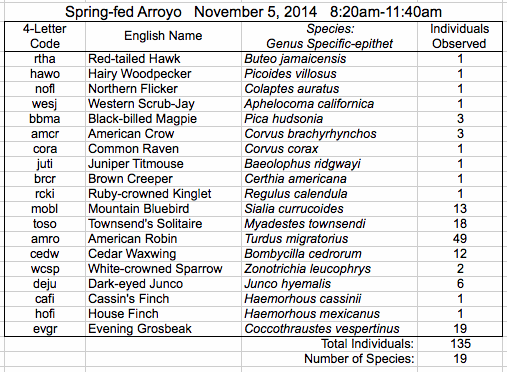

Date: November 5, 2014
Location: Spring-fed Arroyo, Dixon
Number of Species: 19
Time: 8:20-11:40AM
Weather: Clear, calm
Number of Observers: 4
Plain List (Scroll Down for Picture List):

| English Name: Genus species: | Comments | Photos |
| Diurnal Raptors: Vultures, Eagles, Hawks and Falcons | ||
| Red-tailed Hawk Buteo jamaicensis  Enlarge Map External Sites: Cornell USGS Image Search | Often easily identified by visible red tail. If tail is not visible, other field marks can be used: From below in flight, the dark front edges of the wings next to the body and the dark "commas" at the wrist are unique among local hawks. When perched, the dark belly band against the white front is diagnostic. Juveniles (lowest photo) do not yet have a red tail. Number of Individuals Observed:1 | 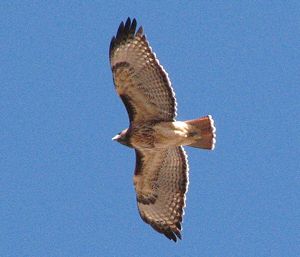 El Bosque 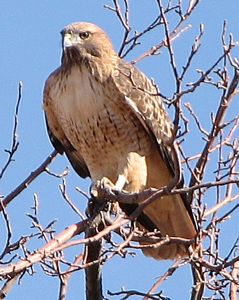 El Bosque 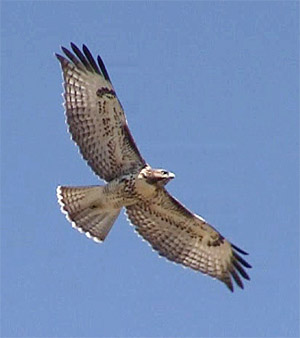 Camino Lejo, Santa Fe |
| Woodpeckers | ||
| Hairy Woodpecker Picoides villosus 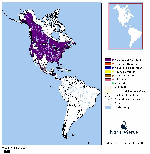 Enlarge Map External Sites: Cornell USGS Image Search | Very similar to Downy Woodpecker, but larger. Commonly distinguished by its large bill which is often as long as the bird's head from front to back. Number of Individuals Observed:1 | 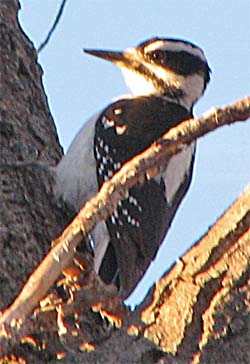 El Bosque 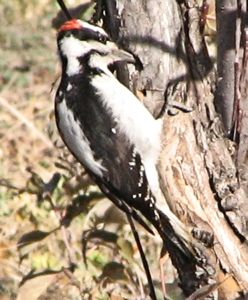 El Bosque |
| Northern Flicker Colaptes auratus 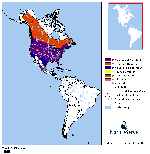 Enlarge Map External Sites: Cornell USGS Image Search | One of the most common birds in the valley. From below, shows red feather shafts in flight. The upper photo shows key marks: Black breast band. Red feather shafts on underside of wings and tail. Red mark under the eye indicates a male. Female (middle photo): no red face mark. Lower photo shows diagnostic white rump patch which is always visible in flight and sometimes visible when perched. Number of Individuals Observed:1 | 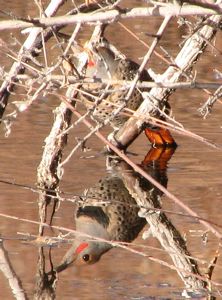 Cachanillas 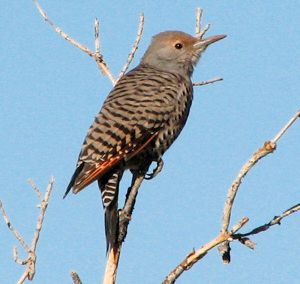 El Bosque 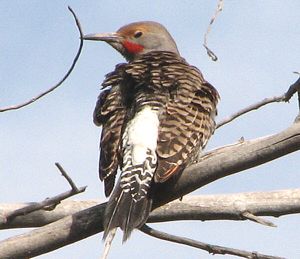 El Bosque |
| Jays, Crows and their Allies | ||
| Western Scrub-Jay Aphelocoma californica 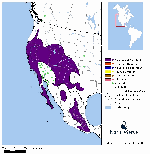 Enlarge Map External Sites: Cornell USGS Image Search | Common in all area habitats. Note white throat and faint white eyebrow. Also brownish-gray back. Distinguished from the Pinyon Jay by longer tail and solitary behavior. Number of Individuals Observed:1 | 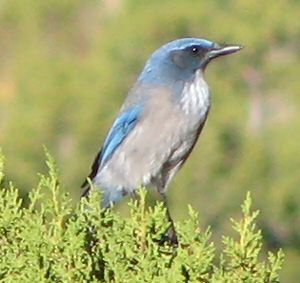 Arroyo la Mina 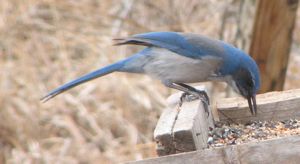 Cañoncito |
| Black-billed Magpie Pica hudsonia 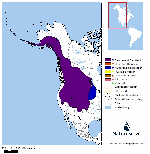 Enlarge Map External Sites: Cornell USGS Image Search | Unmistakable large black and white bird with very long tail. Number of Individuals Observed:3 | 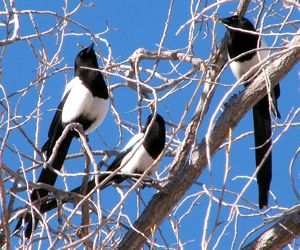 El Bosque |
| American Crow Corvus brachyrhynchos 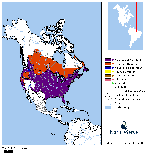 Enlarge Map External Sites: Cornell USGS Image Search | At times difficult to distinguish from Common Raven as the largest Crows are nearly as big as the smallest Ravens. By sound, the crow's "caw" is familiar. In flight, the crow's tail is often square or rounded. Crows are very social and often appear in noisy groups. Bill smaller and thinner than that of the Raven. Number of Individuals Observed:3 | 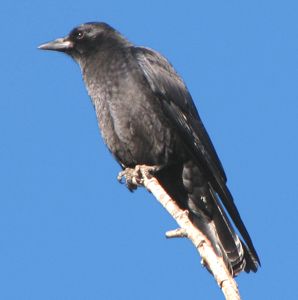 El Bosque |
| Common Raven Corvus corax 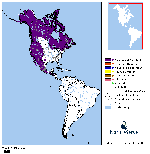 Enlarge Map External Sites: Cornell USGS Image Search | At times difficult to distinguish from American Crow. By sound, a throaty chortle or shout. In flight, the tail often appears wedge shaped. Ravens are often solitary, but sometimes appear with a few other individuals. Often soars like a hawk. Crows do not. Bill is thick and heavy. The throat is shaggy compared to the Crow. Breeding pairs perform synchronized flight high overhead. Number of Individuals Observed:1 | 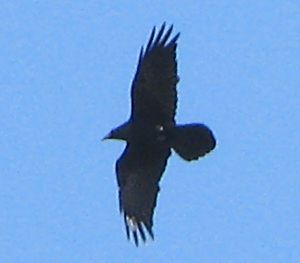 El Bosque 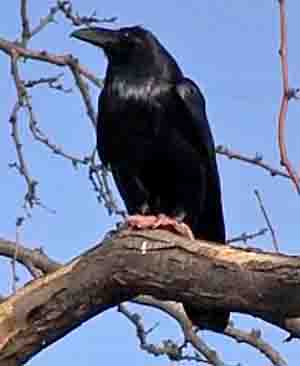 Camino de los Marquez, Santa Fe |
| Chickadees and their Allies | ||
| Juniper Titmouse Baeolophus ridgwayi 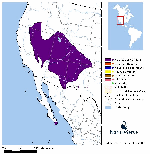 Enlarge Map External Sites: Cornell USGS Image Search | Generally seen in Juniper trees, the crest on the head is distinctive. Some of its vocalizations similar to Chickadee. Often detected by soft woodpecker-like tapping on branches. Number of Individuals Observed:1 | 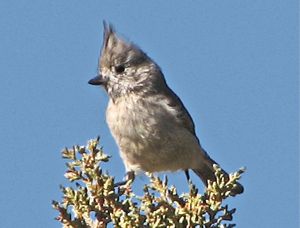 Camino Lejo, Santa Fe |
| Nuthatches and Creepers | ||
| Brown Creeper Certhia americana 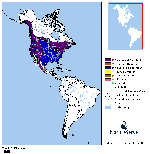 Enlarge Map External Sites: Cornell USGS Image Search | Easily overlooked, this brown-backed bird blends in with the bark it "creeps" on. Generally noticed when it flies to the base of a tree. After ascending the trunk, it flies again to the base of another tree. Note: Slightly decurved bill. Generally ascends trunk in a spiral motion. Number of Individuals Observed:1 | 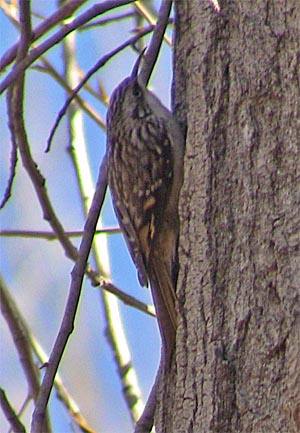 El Bosque, December 1, 2012 |
| Kinglets and Gnatcatchers | ||
| Ruby-crowned Kinglet Regulus calendula 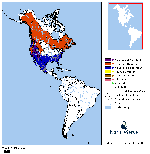 Enlarge Map External Sites: Cornell USGS Image Search | In the summer, this species is found breeding at higher altitudes. Singing individuals are very common in nearby high mountain forests such as Amole Canyon above Vadito. The species winters in the Dixon/Embudo area where it is usually heard before seen, making a harsh, attention getting "juh-juh" in shrubs and low trees along the Río Embudo. Number of Individuals Observed:1 | 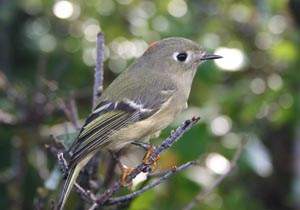 Photo: Donna Dewhurst USFWS Alaska |
| Thrushes and their Allies | ||
| Mountain Bluebird Sialia currucoides 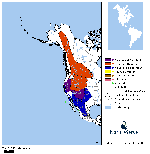 Enlarge Map External Sites: Cornell USGS Image Search | Number of Individuals Observed:13 | 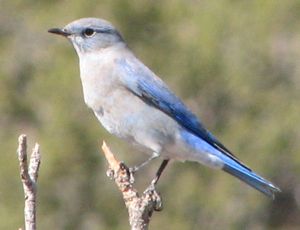 Dixon 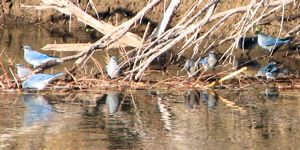 Orilla Verde Enlarge |
| Townsend’s Solitaire Myadestes townsendi 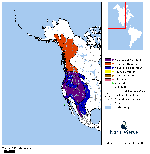 Enlarge Map External Sites: Cornell USGS Image Search | This bird is most often observed sitting in the tops of trees sounding a repeated, high, slow whistle. Gray all over with white on sides of tail. Fluttery in flight, with cream-colored bands running the length of each wing on the underside. Number of Individuals Observed:18 | 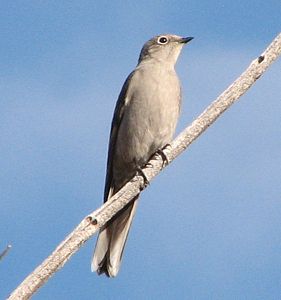 Harding Mine |
| American Robin Turdus migratorius 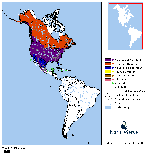 Enlarge Map External Sites: Cornell USGS Image Search | Best known American Bird. Note reddish breast, light colored bill and large white split eye-ring. Number of Individuals Observed:49 | 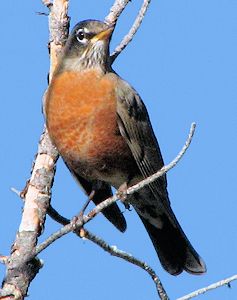 El Bosque |
| Waxwings | ||
| Cedar Waxwing Bombycilla cedrorum 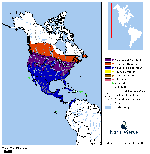 Enlarge Map External Sites: Cornell USGS Image Search | Number of Individuals Observed:12 | 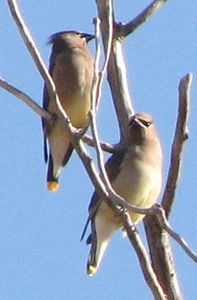 Río Ojo Sarco 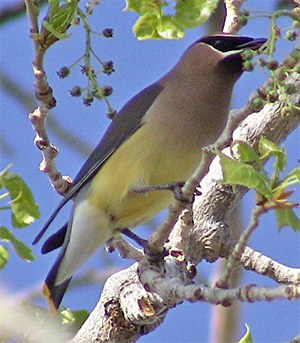 La Cieneguilla, 2011 Enlarge 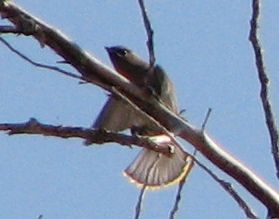 Río Ojo Sarco |
| Sparrows and their Allies | ||
| White-crowned Sparrow Zonotrichia leucophrys 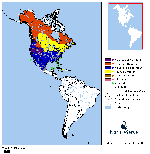 Enlarge Map External Sites: Cornell USGS Image Search | Adult (Upper Photo): Distinctive black and white stripes on head. Light colored bill. Clear breast and belly. Juvenile (Lower Photo): Head stripes brown and gray. Number of Individuals Observed:2 | 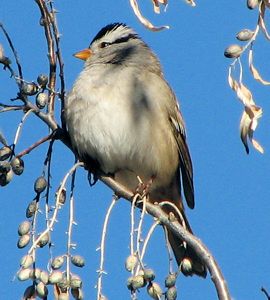 Dixon 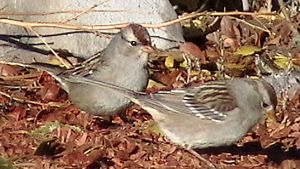 Dixon |
| Dark-eyed Junco Junco hyemalis 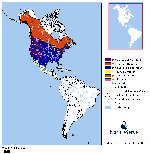 Enlarge Map External Sites: Cornell USGS Image Search | In winter, there are 5 sub-species of Dark-eyed Junco in our area. Many have a full black or gray hood. All have a dark eye set in dark plumage. Almost always in flocks of 10-20 individuals. Identifiable by a very "dry" sounding "tck-tck" and by white showing on the sides of the tail, especially in flight. Do a an Image Search (at left) to get an idea of the great variation in the plumage of this species. Number of Individuals Observed:6 | 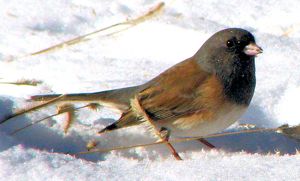 Dixon 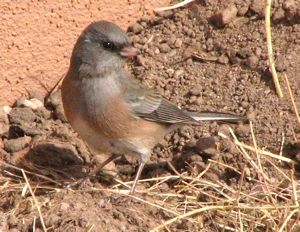 Dixon |
| Finches and Old World Sparrows | ||
| Cassin’s Finch Carpodacus cassinii 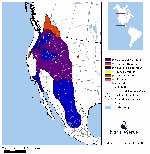 Enlarge Map External Sites: Cornell USGS Image Search | Very similar to House Finch. Female (Upper Photo) has cleaner, more well defined streaking than House Finch. Note white eyebrow. Male Cassin's (Lower Photo), unlike House Finch, is clear breasted. Cassin's has less extensive red than House Finch, but with a well defined red crown patch. Bill appears less curved than House Finch bill. Number of Individuals Observed:1 | 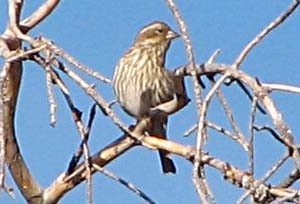 Dixon 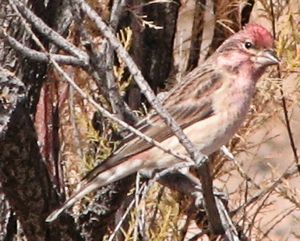 Dixon |
| House Finch Carpodacus mexicanus 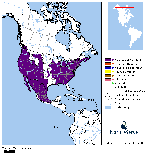 Enlarge Map External Sites: Cornell USGS Image Search | Often seen at feeders, this species is common in all habitats, especially agricultural areas. Male (upper picture) is easily identified by red plumage on head, throat, breast and rump. Female (lower photo) does not have red. Both sexes have streaking on breast, belly and flanks. Number of Individuals Observed:1 | 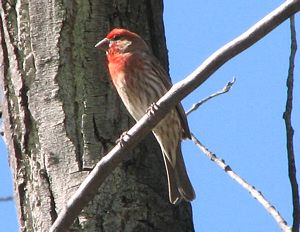 Arroyo La Mina 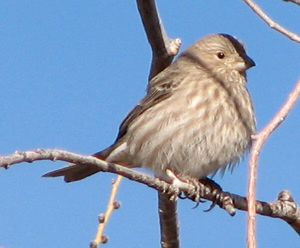 Arroyo La Mina |
| Evening Grosbeak Coccothraustes vespertinus 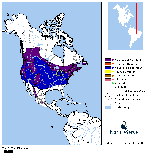 Enlarge Map External Sites: Cornell USGS Image Search | Number of Individuals Observed:19 | 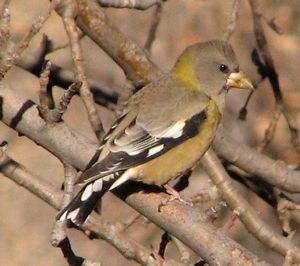 Dixon 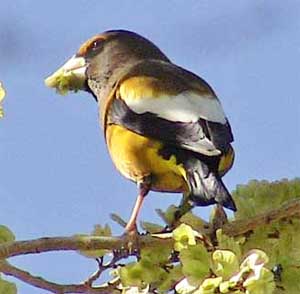 Paseo de Peralta, Santa Fe |